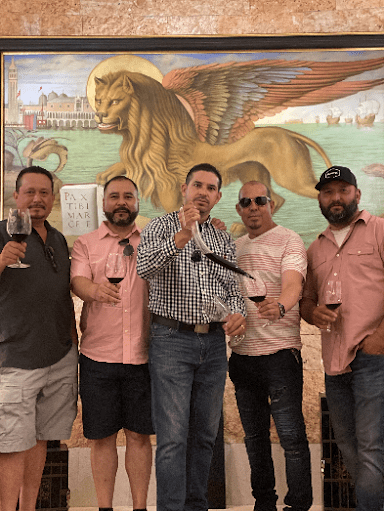Sip Consciously
Sip Consciously
Since the Paris Tasting of 1976 Napa Valley was placed on a global map and quickly grew to become a top wine mecca destination, traditionally highlighting trailblazers like Robert Mondavi, Charles Krug, and the like. While these individuals certainly helped set the stage, we so often leave out the other faces and names of individuals who have largely continued to make Napa Valley the success that it is today—immigrants.
In the early 40’s when the United States entered the World War II era, there was an overwhelming labor shortage which prompted the Bracero Program—a contract labor program between the US and Mexico that brought between 4 to 5 million Mexican laborers to the United States. By 1960, Braceros made up about 25% of the agricultural labor force, a catalyst that would grow a full-body, Mexican American community in Napa and Sonoma. Years later, many of the faces that sustained this valley throughout turbulent decades have been left out of conversation of Napa Valley’s success.
As a first generation, Mexican-descent child growing up in Napa Valley, I witnessed this firsthand my entire life. I watched my father grow his career from working in the vineyards and waking up at 4:00am (or earlier!) to becoming cellar master and crafting beautiful wines over the last 20+ years. Though he migrated as a teenager to Napa Valley with minimal understanding of the vineyards and winemaking, his tenacity helped drive much of his growth and success, and it’s his knowledge of this world that has kept me curious and continuously inspires me to keep paving my own path in my wine journey.
I recently witnessed the fruit of his labor while wine tasting with him and my family. Playing tourist in our backyard is fun (although us locals know it rarely happens!), yet what made this experience far greater than any “tour” I had been on was that it was led by several family members—each Tio who established themselves as a prominent winemaker throughout several Napa Valley wineries—and they were doing it all in Spanish. To have a tour and get to learn about wine in your own native tongue was a chilling moment. The twinkle I saw in my Tia’s face as she understood what was being discussed and without any hesitation to ask questions or seek further clarity when something didn’t connect was incredible. This. This was power in diversity. This was power rooted in equity. This is what the wine industry was lacking.
(although us locals know it rarely happens!), yet what made this experience far greater than any “tour” I had been on was that it was led by several family members—each Tio who established themselves as a prominent winemaker throughout several Napa Valley wineries—and they were doing it all in Spanish. To have a tour and get to learn about wine in your own native tongue was a chilling moment. The twinkle I saw in my Tia’s face as she understood what was being discussed and without any hesitation to ask questions or seek further clarity when something didn’t connect was incredible. This. This was power in diversity. This was power rooted in equity. This is what the wine industry was lacking.
 In an effort to amplify the stories of immigrants, and other people of color whom we rarely get to hear about, despite having done the work in Napa Valley for decades, I launched a podcast called The Big Sip. The Big Sip (@thebigsipseries), which airs on KVON’s 1440AM on Thursday’s at 10:00am and streams on all audio platforms, aims to “spill knowledge on sip that matters,” highlighting black and brown trailblazers, pioneers, and risk takers doing the work! For far too long, people of color, despite primarily being the backbone of this industry, have not felt a part of the industry or its success narrative. Being able to shape these narratives and amplify diversity in the wine industry creates a more welcoming community and space that acknowledges all are welcome here, and that wine truly is for everyone.
In an effort to amplify the stories of immigrants, and other people of color whom we rarely get to hear about, despite having done the work in Napa Valley for decades, I launched a podcast called The Big Sip. The Big Sip (@thebigsipseries), which airs on KVON’s 1440AM on Thursday’s at 10:00am and streams on all audio platforms, aims to “spill knowledge on sip that matters,” highlighting black and brown trailblazers, pioneers, and risk takers doing the work! For far too long, people of color, despite primarily being the backbone of this industry, have not felt a part of the industry or its success narrative. Being able to shape these narratives and amplify diversity in the wine industry creates a more welcoming community and space that acknowledges all are welcome here, and that wine truly is for everyone.
So the next time you’re out buying a bottle of wine or tasting throughout Napa Valley, I encourage you to find producers or winemakers who are people of color (yes, this is going to take effort on your part and require a bit of research but remember there is power in your purchase). Learn their stories. Learn their history. Though the waters may physically separate us, it’s wine that brings us together. May the future generation continue making more space at the table, the industry more approachable and welcoming, and fuller of love and passion. Here’s to my hard-working Latin@s that have tenaciously figured it all out on their own. Sip Consciously, Salud!


